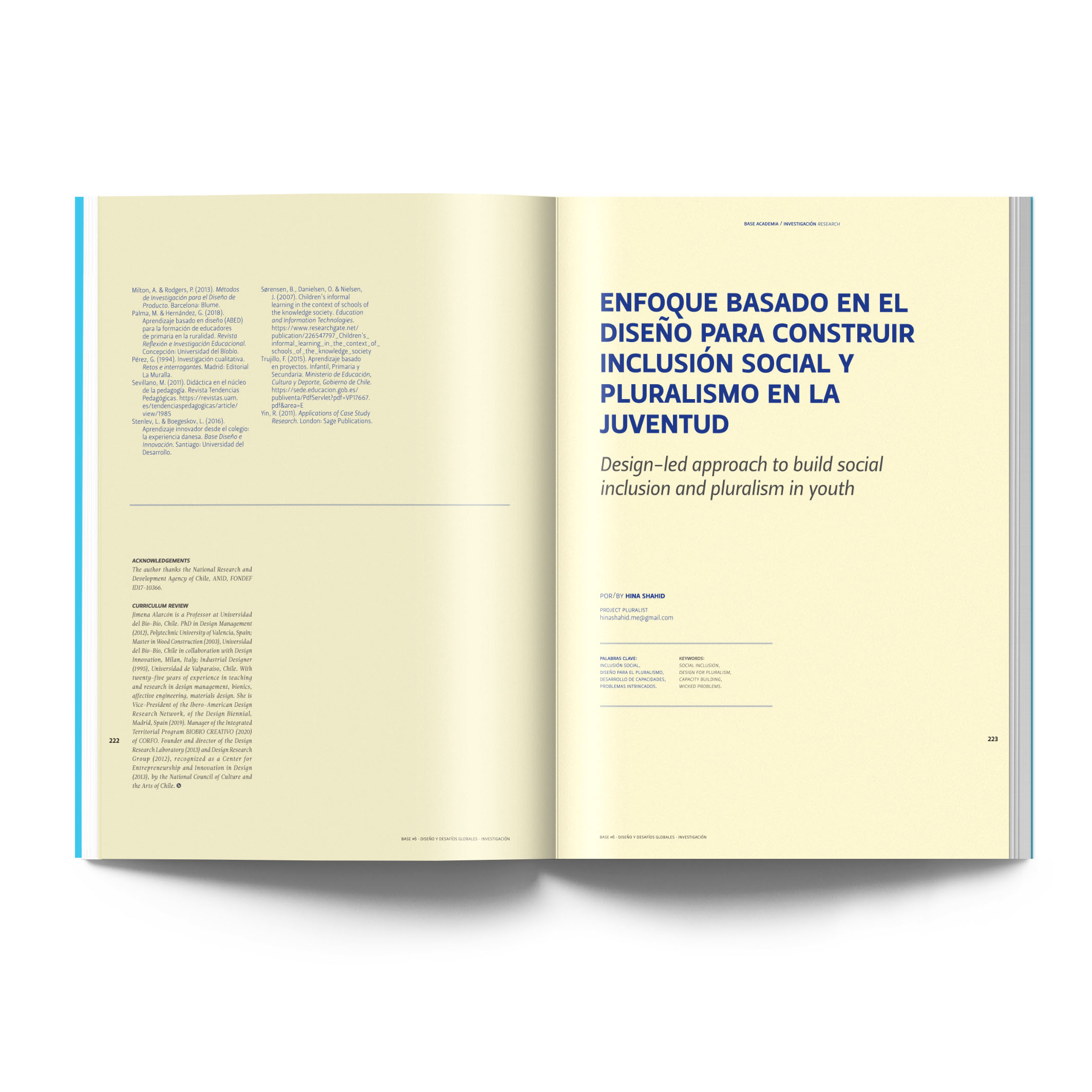Design-led approach to building social inclusion and pluralism in youth
Main Article Content
Abstract
This article explores the use of design—process, methods and pedagogy to promote social inclusion and pluralism among the youth. It makes the case that design’s opportunity-driven approach combined with abductive reasoning and thinking is better suited to tackle uncertain, ambiguous and ever-evolving wicked problems such as exclusion—bias, discrimination and hate. It further discusses the work of a design-led social impact initiative based in the United States that uses design and creative facilitation to develop programs intended to cultivate a culture of inclusion in schools and classrooms. This paper outlines the use of systemic and individual behavior change strategies predominantly by; 1) developing learning modules, 2) cultivating pluralist competencies in students, and 3) capacity building for educators—providing facilitation tools and training for implementation at scale. Tested with more than 100 students and six educational.
Article Details
References
Baldwin, J. (1961). Nobody Knows My Name: More Notes of a Native Son. New York, NY. Dial Press.
Center of Disease Control. (2017). Bullying in classroom report.
Conklin, J. (2001). Wicked Problems and Social Complexity. CogNexus Institute. [Online]. Available at: http://cognexus.org/wpf/wickedproblems.pdf.
Davidowitz, S. S. (2017). Everybody Lies: Big Data, New Data, and What the Internet Can Tell Us About Who We Really. New York, NY. Dey Street Books
Davis, M. H. (1980). A multidimensional approach to individual differences in empathy. JSAS Catalog of Selected Documents in Psychology, p10, 85.
Kolb, David A., 1939-. (1984). Experiential learning: experience as the source of learning and development. Englewood Cliffs, N.J.Prentice-Hall.
Love, D. A. (2017, 9 16). Children committing hate crimes reflect our society. CNN. https://www.cnn.com/2017/09/16/opinions/children-committing-hate-crime-opinion-love/index.html
Margolin, V. (2002). The Politics of The Artificial – Essays on Design and Design Studies. Bibliovault OAI Repository, the University of Chicago Press.
Mohammed, Amina. (2019). Retrieved December 1, 2020, from https://www.un.org/press/en/2019/dsgsm1294.doc.htm
Modan, N. (2019, 10 28). 3 best practices for addressing hate and prejudice on school grounds. K-12 Dive. https://www.k12dive.com/news/3-best-practices-for-addressing-hate-and-prejudice-on-school-grounds/565157/
National Center for Educational Statistics. (2007). School Crime Supplement to the National Crime Victimization Survey.
Nussbaum, M. C. (2011). Creating capabilities: the human development approach. Cambridge, Mass. Belknap Press of Harvard University Press.
Ritchey, T. (2013). Wicked Problems: Modelling Social Messes with Morphological Analysis. Acta Morphologica Generalis, Vol. 2 No. 1.
Rittel, H., & Melvin, W. (1973). Dilemmas in a General Theory of Planning, Policy Sciences 4, Elsevier Scientific Publishing, Amsterdam, pp. 155-159.
Schwarzer, R., & Jerusalem, M. (1995). Generalized Self-Efficacy scale. In J. Weinman, S. Wright, & M. Johnston, Measures in health psychology: A user’s portfolio. Causal and control beliefs, pp. 35-37. Windsor, UK: NFER-NELSON.
Shahid, H. (2018). Preventing Extremism: A Design-led Approach to Building Resilience. Savannah College of Art and Design, Savannah.
Southern Poverty Law Center. (2016). After Election Day: The Trump Effect: The Impact of the 2016 Presidential Election on Our Nation’s Schools.
Tufekci, Z. (2018). YouTube, the Great Radicalizer. Retrieved December 1, 2020, from https://www.nytimes.com/2018/03/10/opinion/sunday/youtube-politics-radical.html
UN Sustainable Development Goals: Sustainable Development Knowledge Platform. Accessed April 27, 2020. https://sustainabledevelopment.un.org/?menu=1300.


